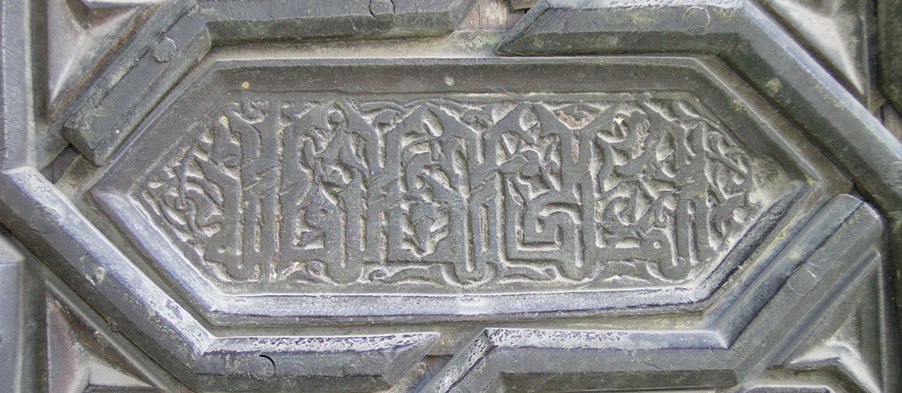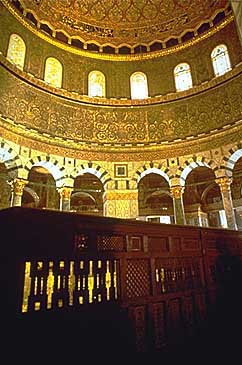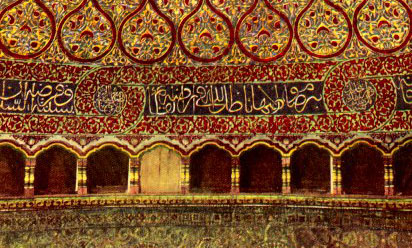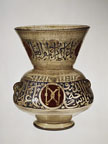Calligraphic Designs in Islamic Art
The
Sevilla Cathedral reuses the doors from the 12th century
Mosque, utilizing the calligraphic decoration as part of the visual program of the building. Referring to an Islamic portion of the society and history, calligraphic designs exhibit a royal, pious, and
Andalusian style. Spain is not the sole site of such decoration, but all of the Islamic world utilized calligraphy as a method of decoration, serving as both information and symbols.
Inscription from La Puerta del Perdon, Sevilla Cathedral, 12th century
As E.C. Dodd wrote in "The Image of the Word," the written word could act as a symbol, in the same way that an image of Christ or saints act in Christianity.
1 Not purely for informational content, but also as an aid for religious devotion, calligraphy functioned as a symbol for Muslims as figural images were prohibited from religious Islamic art. For instance, in the interior decoration of the Dome of the Rock in Jerusalem, a Quranic inscription adorns the rim of the dome, stating the basic tenets of Islam. The
Umayyads erected this building as their first public monument of their rule in Jerusalem, overtaking the previous Christian rule. The inscription functioned as a statement of the faith, the new Umayyad rule, and a tool for the faithful to use.
Detail of the inscription from the Dome of the Rock, Jerusalem
Interior of the Dome of the Rock
Aside from political and religious monuments, inscriptions are used in portable objects. These portable objects moved through a network of courts and artists throughout the Mediterranean, thereby changing the taste for luxury objects.2
This network allowed Christian cities on the Mediterranean to become familiar with this visual vocabulary, and eventually appropriate it for their own symbols of power. This ocurred in Andalusia and Sicily, especially because these two areas had a direct tie to Islamic society and art as the Christians overtook the Muslim rulers of these parts of the Mediterranean.
Samanid Epigraphic Ware, 10th century
Mosque Lamp, Mamaluk, c. 1285





